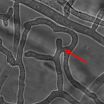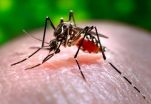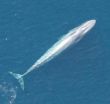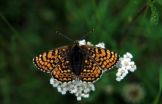(Press-News.org) Does a distinctive mechanism work in the brain of congenitally blind individuals when understanding and learning others' gestures? Or does the same mechanism as with sighted individuals work? Japanese researchers figured out that activated brain regions of congenitally blind individuals and activated brain regions of sighted individuals share common regions when recognizing human hand gestures. They indicated that a region of the neural network that recognizes others' hand gestures is formed in the same way even without visual information. The findings are discussed in The Journal of Neuroscience (July 23, 2014 electronic edition).
Our brain mechanism perceives human bodies from inanimate objects and shows a particular response. A part of a region of the "visual cortex" that processes visual information supports this mechanism. Since visual information is largely used in perception, this is reasonable, however, for perception using haptic information and also for the recognition of one's own gestures, it has been recently learned that the same brain region is activated. It came to be considered that there is a mechanism that is formed regardless of the sensory modalities and recognizes human bodies.
Blind and sighted individuals participated in the study of the research group of Assistant Professor Ryo Kitada of the National Institute for Physiological Sciences, National Institutes of Natural Sciences. With their eyes closed, they were instructed to touch plastic casts of hands, teapots, and toy cars and identify the shape. As it turned out, sighted individuals and blind individuals could make an identification with the same accuracy. Through measuring the activated brain region using functional magnetic resonance imaging (fMRI), for plastic casts of hands and not for teapots or toy cars, the research group was able to pinpoint a common activated brain region regardless of visual experience. On another front, it also revealed a region showing signs of activity that is dependent on the duration of the visual experience and it was also learned that this region functions as a supplement when recognizing hand gestures.
As Assistant Professor Ryo Kitada notes, "Many individuals are active in many parts of the society even with the loss of their sight as a child. Developmental psychology has been advancing its doctrine based on sighted individuals. I wish this finding will help us grasp how blind individuals understand and learn about others and be seen as an important step in supporting the development of social skills for blind individuals."
INFORMATION: END
Brain mechanism underlying the recognition of hand gestures develops even when blind
2014-09-05
ELSE PRESS RELEASES FROM THIS DATE:
Synthetic messenger boosts immune system
2014-09-05
This news release is available in German. When a pathogen attacks a healthy cell in the body, T lymphocytes are tasked with identifying and destroying the infected cell. Scientists know that they undergo a "training program" for this task in the lymph nodes or the spleen. "Programming cells" play a key role here, presenting pathogen constituents to the T lymphocytes. This is how the T lymphocytes learn to recognize these components and become specialized "killer" cells. Research teams led by Prof. Percy Knolle from Klinikum rechts der Isar and the University of Bonn ...
Combination microRNA therapy shown to suppress non-small-cell lung cancer
2014-09-05
BOSTON – Micro RNAs (miRNA) have recently emerged as key therapeutic agents against cancers and are actively being evaluated in pre-clinical models of various cancers as well as in human clinical trials.
Now, new findings show that a combination therapy of two miRNAs, let-7 and miR-34, suppressed tumor growth in an animal model of non-small-cell lung cancer, offering a promising therapeutic avenue for this extremely aggressive malignancy.
Currently reported online in the journal Oncogene, the study provides two important examples of basic science discoveries making ...
Stigma as a barrier to mental health care
2014-09-05
Over 60 million Americans are thought to experience mental illness in a given year, and the impacts of mental illness are undoubtedly felt by millions more in the form of family members, friends, and coworkers. Despite the availability of effective evidence-based treatment, about 40% of individuals with serious mental illness do not receive care and many who begin an intervention fail to complete it. A new report, published in Psychological Science in the Public Interest, a journal of the Association for Psychological Science, investigates stigma as a significant barrier ...
An 'anchor' that keeps proteins together
2014-09-05
All organisms react to different external and internal stimuli: if, for example, the hyphae fungus Sordaria macrospora is supplied with food, it produces fruiting bodies as part of its oestrous cycle. To initiate this reaction, signals have to be transmitted within the cell, which are conveyed by proteins. Physical proximity is a fundamental requirement for different proteins to be able to communicate with each other. Generating that proximity is what scaffolding proteins do, by binding like an anchor to several proteins and keeping them together for the duration of signal ...
Use of dengue vaccine may cause short-term spikes in its prevalence
2014-09-05
CORVALLIS, Ore. – As researchers continue to work toward vaccines for serious tropical diseases such as dengue fever, experts caution in a new report that such vaccines will probably cause temporary but significant spikes in the disease in the years after they are first used.
This counter-intuitive and unwanted result could lead to frustrated policy makers, a skeptical public and concerns that the vaccine is making things worse instead of better, researchers say.
In fact, it will just be the natural result of complex interactions between less-than-perfect vaccine protection ...
E-cigarettes: Studies presented at the ERS Congress
2014-09-05
Munich, Germany: The latest evidence on the potential benefits and risks of e-cigarettes has been presented this week at the European Respiratory Society's International Congress in Munich.
Electronic cigarettes have received much attention in recent years as their use has increased across Europe. As the devices are relatively new, there is little long-term evidence detailing the potential harm or benefit that these devices can cause.
During the ERS Congress, a number of abstracts will be presented on the topic. The key outcomes are revealed here:
Research into ...
IBD patients: Consider giving infliximab a second try
2014-09-05
Bethesda, MD (Sept. 5, 2014) — Restarting infliximab therapy after a drug holiday is safe and effective for patients with inflammatory bowel disease (IBD), according to a new study1 in Clinical Gastroenterology and Hepatology, the official clinical practice journal of the American Gastroenterological Association.
"Our findings suggest that starting infliximab after a history of prior therapy can be very beneficial to patients," said lead study author Filip Baert, MD, PhD, from the department of gastroenterology, University Hospitals Leuven in Belgium. "Most striking, ...
New blood test could offer more tailored treatment of ovarian cancer
2014-09-05
A new blood test allowing doctors to predict which ovarian cancer patients will respond to particular types of treatment is a step closer following a new study by Manchester scientists.
Researchers from The University of Manchester and The Christie NHS Foundation Trust - both part of Manchester Cancer Research Centre - say the test could be developed and used in hospitals within the next few years.
It would mean medics could see which patients could benefit from blood vessel-targeting drugs - such as bevacizumab - in addition to conventional therapy. Meanwhilehile others ...
California blue whales rebound from whaling, first of their kin to do so
2014-09-05
The number of California blue whales has rebounded to near historical levels, according to new research by the University of Washington, and while the number of blue whales struck by ships is likely above allowable U.S. limits, such strikes do not immediately threaten that recovery.
This is the only population of blue whales known to have recovered from whaling – blue whales as a species having been hunted nearly to extinction.
Blue whales – nearly 100 feet in length and weighing 190 tons as adults – are the largest animals on earth. And they are the heaviest ever, weighing ...
Glanville fritillary genome sequenced at the University of Helsinki
2014-09-05
The Glanville fritillary has long been an internationally known model species for ecology and evolutionary biology, whose population biology has been studied on the Åland Islands for more than twenty years. Now the species has become even more significant. Led by Research Professor Ilkka Hanski, the Metapopulation Research Group (MRG) at the University of Helsinki has sequenced the full genome of the Glanville fritillary together with three groups from the Institute of Biotechnology at the same university.
Before the sequencing of the Glanville fritillary genome, which ...



